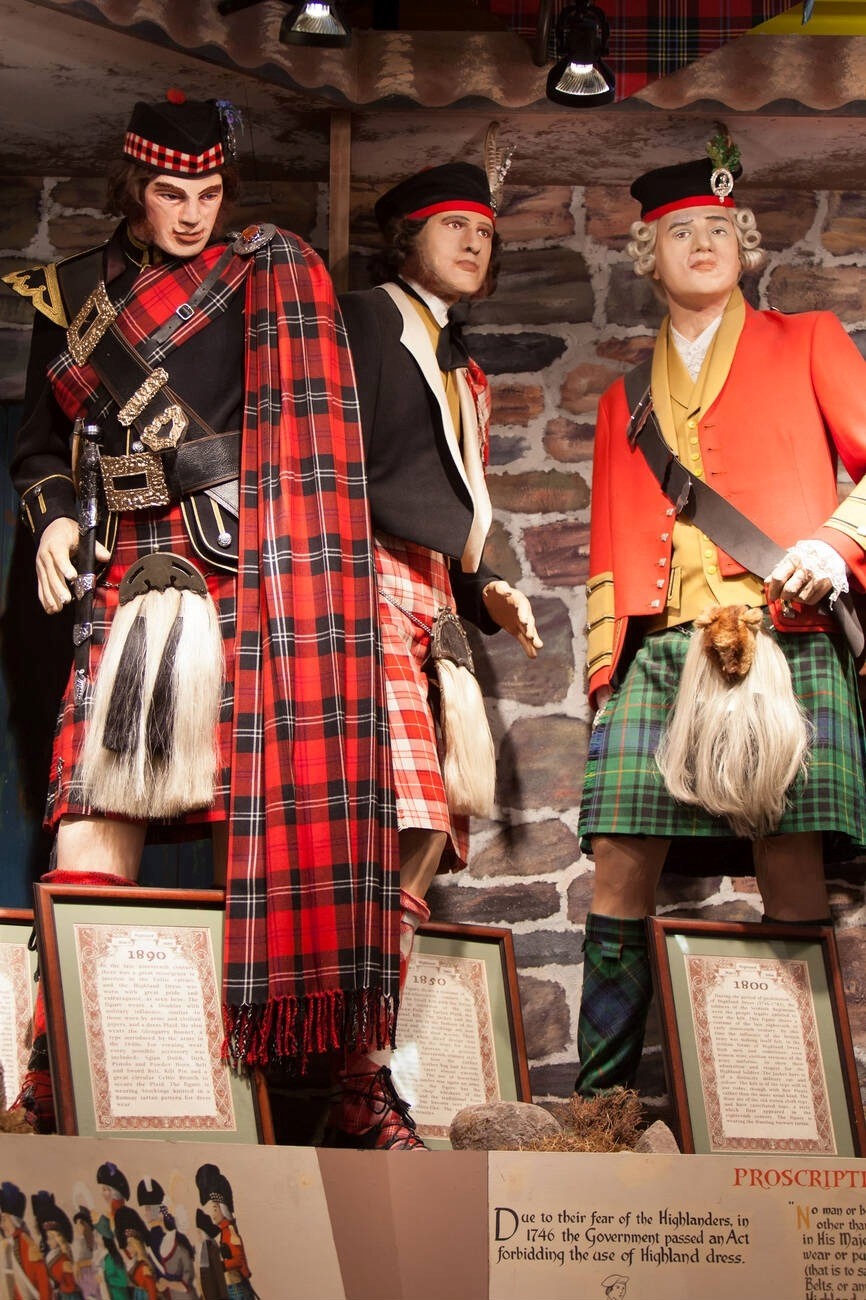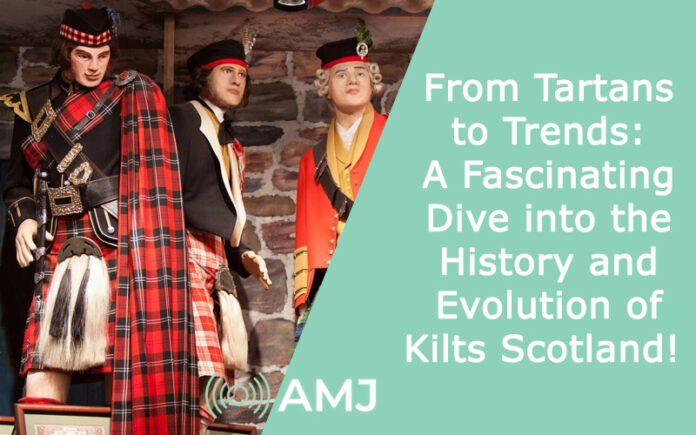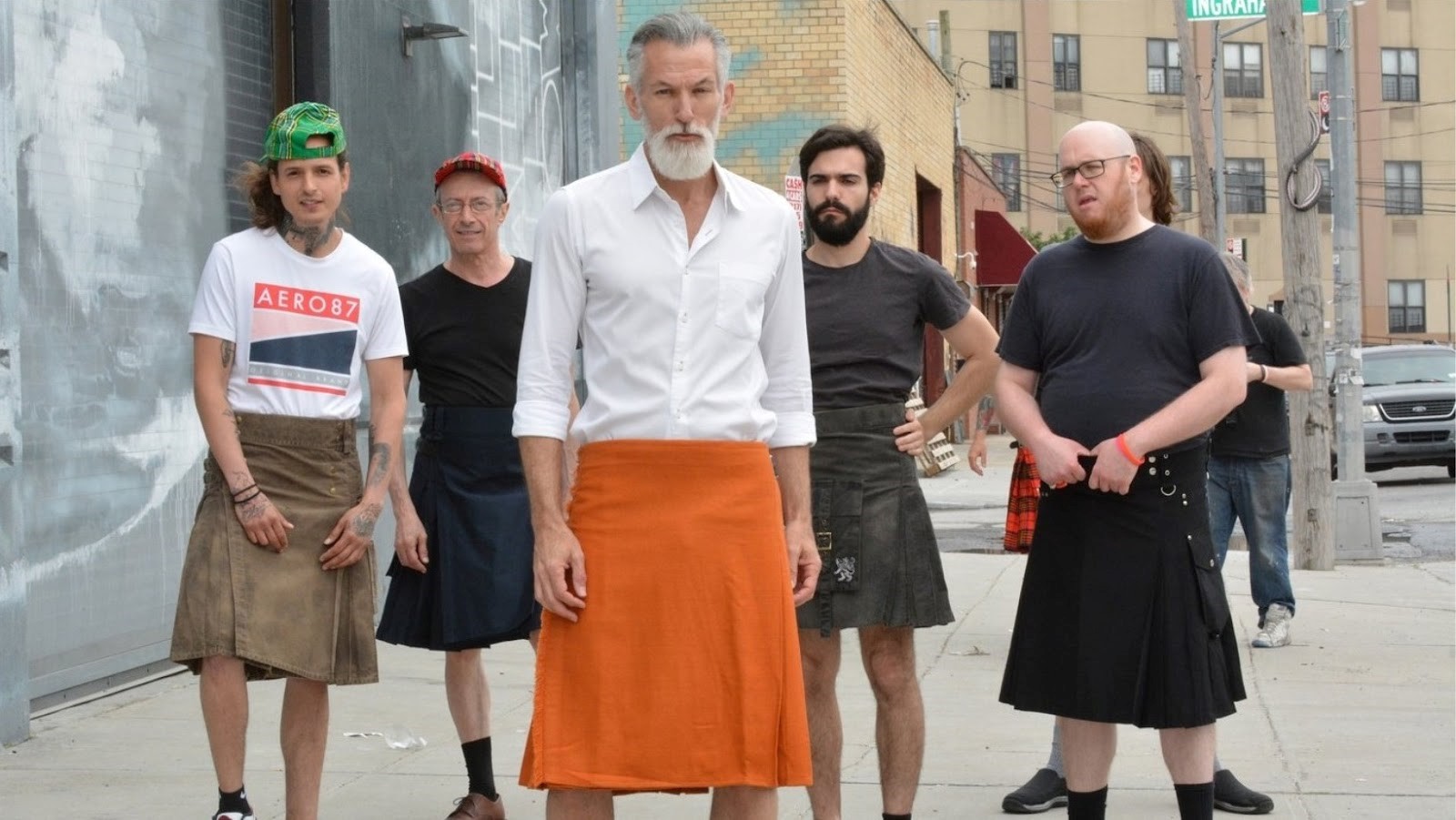The kilt is a traditional garment that is synonymous with Scotland and its rich history. This iconic attire, with its unique and eye-catching appearance, has captivated people all over the world for centuries. From its historical origins to its modern-day popularity, kilts have evolved and transformed, becoming not just a symbol of Scottish culture but also a fashion statement that reflects individual style. In this article, we will take a deep dive into the history and evolution of kilts, exploring their significance, types, manufacturing, and styling, with a special focus on the renowned Scottish Kilt Shop, a leading provider of high-quality kilts.
Historical Origins of Kilts
The history of kilts can be traced back to ancient times. The earliest evidence of a garment similar to a kilt dates back to the 16th century, with the “Great Kilt” or “Feileadh Mhor,” which was a long piece of cloth worn wrapped around the body and fastened with a belt. This garment was primarily worn by Highland clans in Scotland and served as a practical and functional attire for the harsh and rugged terrain of the Scottish Highlands.
Over time, the design of the kilt evolved in Scotland, with the introduction of pleating, which made it more comfortable and allowed for ease of movement. The “Little Kilt” or “Feileadh Beag” emerged in the late 17th century, which was shorter in length and pleated only at the back. This design eventually became the precursor to the modern-day kilt, a popular traditional garment in Scotland that is worn by men and women alike for various occasions, including weddings, parties, festivals, and everyday wear. Kilts Scotland has a rich history and cultural significance, representing the Scottish heritage and identity. Today, Kilts Scotland is available in different styles, fabrics, and tartan patterns, with customization options to create a unique and personalized garment. Experience the timeless charm of kilts in Scotland – Shop now at Scottish Kilt Shop and embrace the rich heritage of Scottish attire!

Evolution of Kilts in Scotland
The kilt underwent several transformations throughout history, influenced by social, cultural, and political factors. In the 18th century, kilts gained popularity among the Scottish military, with many Highland regiments adopting them as part of their uniforms. The kilt became a symbol of Scottish identity and loyalty, and it was worn with pride by soldiers both in Scotland and on the battlefields of Europe.
However, the kilt faced a period of decline in the late 18th and early 19th centuries, due to various factors such as the Highland Clearances, which resulted in the suppression of Scottish culture and the decline of the Gaelic language and traditions. Kilts were banned in Scotland, and wearing them was considered a sign of rebellion.
It was not until the mid-19th century that kilts started to regain popularity, thanks to the efforts of Scottish romantics and the royal family. Queen Victoria’s visits to Scotland and her fondness for Scottish culture revived interest in kilts among the general public, and they once again became a symbol of Scottish pride and identity.
Significance of Tartans in Kilts
One of the most significant elements of kilts is the tartan pattern, which is a distinctive and colorful design woven into the fabric. Tartans are specific patterns of crisscrossed horizontal and vertical bands of different colors, and they have been associated with Scottish clans and families for centuries.
Tartans have been used to identify and differentiate various clans and families in Scotland, with each tartan having its unique colors and pattern. Tartans are an essential part of Scottish culture and history, and they hold significant symbolism in kilts. The use of tartans in kilts became popular in the 19th century when kilts started to regain their popularity. Tartans were used to represent different clans and families, and wearing a specific tartan was a way of showing allegiance to a particular clan or family. Today, tartans are not only used in traditional kilts but also in modern fashion, with various tartan patterns being incorporated into clothing, accessories, and home décor.
The Popularity of Kilts in Modern Times
Kilts have come a long way from being just a traditional garment. In modern times, kilts have gained popularity not only in Scotland but also around the world as a unique and stylish fashion statement. Kilts are now worn not only for formal occasions such as weddings, ceremonies, and cultural events but also as casual wear, street fashion, and even in the workplace. The versatility of kilts in modern times has made them a popular choice for people of all genders, ages, and backgrounds. Man Kilt is now available in various styles, colors, and patterns, allowing individuals to express their personal style and creativity. Many fashion designers and brands have also incorporated kilts into their collections, showcasing them on international runways and in fashion magazines.
Different Types of Kilts
Kilts come in different styles and types, each with its unique characteristics and history. Some of the most common types of kilts include:
1. Traditional Tartan Kilts:
These kilts are made from traditional tartan fabric and are pleated at the back. They usually feature a tartan pattern that represents a particular clan or family.
2. Utility Kilts:
Utility kilts are a modern take on traditional kilts and are made from durable and functional fabrics such as cotton or denim. They feature pockets, buckles, and other functional elements, making them practical for everyday wear.
3. Hybrid Kilts:
Hybrid kilts are a fusion of traditional and modern elements, combining traditional tartan fabric with modern design features such as zippers, leather straps, and metal hardware.
4. Contemporary Kilts:
Contemporary kilts are designed for fashion-forward individuals who want to make a bold fashion statement. They come in various styles, colors, and patterns, and often feature unique design elements such as asymmetrical pleats, unconventional fabrics, and avant-garde shapes.
5. Mini Kilts:
Mini kilts are shorter in length and are often worn as a fashion statement or for special occasions. They are popular among women and are often paired with leggings or tights.
How Kilts Are Made
The process of making a kilt involves several steps, and it requires skill and craftsmanship to create a high-quality garment. The traditional method of making a kilt involves hand-sewing and pleating the fabric, which can be time-consuming and labor-intensive. However, modern manufacturing techniques have made the process more efficient and accessible.
The first step in making a kilt is selecting the appropriate tartan fabric. Tartan fabrics are made from wool, cotton, or synthetic materials, and they come in various weights and patterns. The fabric is then cut into the desired length and width, depending on the type of kilt being made.
The next step is pleating the fabric, which involves folding and overlapping the fabric to create characteristic pleats at the back of the kilt. The pleats are carefully measured and stitched down, ensuring that they are uniform in size and shape. The pleating process requires skill and precision to achieve the desired result.
Once the pleats are in place, the kilt is then fitted to the wearer’s measurements. This involves adjusting the waistband, securing the pleats, and attaching any additional elements such as buckles, straps, or pockets. The kilt is then finished with a hem at the bottom and a waistband that is fastened with buckles or buttons.
Traditionally, kilts were made by skilled craftsmen who would spend hours hand-sewing and pleating the fabric. However, with the advent of modern manufacturing techniques, kilts are now also made using machine sewing, which has made them more accessible and affordable to a wider audience.
Significance of Kilts in Scottish Culture
Kilts hold a significant cultural and historical significance in Scotland. They are more than just a piece of clothing; they symbolize Scottish heritage, pride, and identity. Kilts are worn during traditional Scottish events such as weddings, clan gatherings, and Highland games, where they represent the rich cultural heritage of Scotland.
Kilts also play a crucial role in preserving and promoting Scottish traditions and customs. The tartan patterns used in kilts are often associated with specific clans or families and are used to showcase lineage and heritage. The wearing of kilts in such events is seen as a way of paying homage to the ancestors and keeping their traditions alive. Moreover, kilts are also used in Scottish celebrations and festivals, where they are often accompanied by traditional Scottish music, dance, and food. They are an integral part of the Scottish cultural identity and are highly cherished by the Scottish people. Discover a wide range of authentic Scottish Kilts For Sale. Embrace the rich cultural heritage of Scotland with these traditional garments, perfect for Scottish celebrations and festivals.
Evolution of Kilts in Fashion
In addition to their traditional significance, kilts have also evolved as a fashion trend over the years. Kilts are now widely recognized as a unique and stylish fashion statement that reflects individuality, creativity, and a sense of adventure. Many fashion designers and brands have incorporated kilts into their collections, showcasing them on international runways and in fashion magazines.
One of the significant factors that have contributed to the evolution of kilts in fashion is the increasing acceptance of gender-fluid and non-traditional fashion. Kilts, which were traditionally associated with men’s wear, is now worn by people of all genders, breaking traditional gender norms in fashion. Kilts have become a symbol of inclusivity and self-expression, and many people are embracing them as a way to showcase their personal style and individuality. Modern kilts also come in various styles, colors, and patterns, offering endless possibilities for creative expression. From traditional tartan kilts to contemporary kilts with unconventional fabrics and design elements, there is a kilt for every fashion enthusiast. Kilts are now worn not only for formal occasions but also as casual wear, street fashion, and even in the workplace, showcasing their versatility and adaptability to modern fashion trends.
Choosing the Right Kilt: Factors to Consider
If you are interested in owning a kilt, there are several factors to consider to ensure that you choose the right Men Kilt for you. Here are some essential tips to keep in mind:
1. Fabric:
Kilts are made from various fabrics, including wool, cotton, and synthetic materials. The fabric you choose will affect the comfort, durability, and appearance of the kilt. Traditional tartan kilts are typically made from wool, which is warm, breathable, and has a luxurious feel. Cotton kilts are lighter and more suitable for warm weather, while synthetic materials offer durability and easy maintenance. Consider the weather, occasion, and your personal preferences when choosing the fabric of your kilt.
2. Style:
Kilts come in various styles, including traditional tartan kilts, utility kilts, hybrid kilts, contemporary kilts, and mini kilts. Each style has its unique characteristics and appeal, so consider your personal style, the occasion, and the desired look when choosing the style of your kilt.
3. Fit:
The fit of the kilt is crucial for comfort and appearance. Kilts are typically worn at the natural waist, and the length should be adjusted to the wearer’s measurements. A well-fitted kilt should sit comfortably on the hips without being too tight or too loose. It’s important to get accurate measurements and consult the size guide of the kilt manufacturer or retailer to ensure a proper fit.
4. Tartan Pattern:
If you’re interested in a traditional tartan kilt, choose a tartan pattern that has significance to you or your family. Tartan patterns represent specific clans or families in Scotland, and each has its unique history and symbolism. Research the tartan patterns and choose the one that resonates with you or matches the occasion.
5. Quality:
Kilts vary in quality depending on the materials and craftsmanship. Look for kilts made from high-quality fabrics, with well-executed pleats, sturdy stitching, and secure fastenings. Investing in a quality kilt ensures durability, comfort, and an authentic look.
6. Accessories:
Kilts are often worn with accessories that complete the traditional Scottish look. Scottish Kilt Accessories may include a sporran (a small pouch worn at the front of the kilt), a kilt pin (used to fasten the front apron of the kilt), a sgian dubh (a small knife worn in the sock), and a belt and buckle. Consider the accessories that complement your kilt and enhance the overall appearance.
7. Occasion:
Consider the occasion and dress code when choosing a kilt. Traditional tartan kilts are suitable for formal events, weddings, or clan gatherings, while utility kilts or contemporary kilts may be more appropriate for casual wear or street fashion. Choose a kilt that fits the occasion and reflects your personal style.
Conclusion
From its humble beginnings as a practical garment worn by Scottish Highlanders to its current status as a fashion statement and cultural icon, kilts have come a long way. The history and evolution of kilts reflect the rich cultural heritage of Scotland and its influence on fashion and style. Kilts are more than just a piece of clothing; they symbolize Scottish pride, tradition, and individuality. Whether you’re a Scot looking to connect with your heritage, a fashion enthusiast seeking a unique style statement, or someone interested in the history and cultural significance of kilts, understanding the different styles, fabrics, patterns, and accessories associated with kilts is essential. By considering these factors, you can choose the proper kilt that fits your style, occasion, and personal preferences. So, embrace the charm and versatility of kilts, and make a statement with this iconic Scottish attire that has stood the test of time and continues to captivate people around the world.
FAQs
Q: Can women wear kilts?
A: Absolutely! Kilts are not limited to men; women can also wear kilts and embrace the unique style and heritage associated with them. In fact, many kilt manufacturers and retailers offer kilts specifically designed for women, with a feminine fit and design elements.
Q: How do I take care of my kilt?
A: Kilts require proper care to maintain their quality and appearance. Follow the care instructions provided by the manufacturer or retailer, which may include dry cleaning, hand-washing, or machine-washing with a gentle cycle and cold water. Avoid using harsh chemicals or bleach that may damage the fabric or colors. Hang or lay flat to dry, and iron on low heat if needed. Proper care will ensure your kilt remains in good condition for years to come.
Q: Can I wear a kilt for non-Scottish events or occasions?
A: Yes, kilts are not limited to Scottish events only. Kilts have evolved into versatile garments that can be worn for various occasions, including weddings, parties, festivals, or even as part of casual everyday wear. Pair it with the right accessories and style it according to the occasion to make a unique fashion statement.
Q: How do I choose the right tartan pattern for my kilt?
A: Tartan patterns hold significance and represent specific clans or families in Scotland. If you have Scottish ancestry, research your family’s tartan pattern and choose accordingly. If not, you can still choose a tartan pattern that resonates with you or matches the occasion. Many kilt retailers offer a wide range of tartan patterns to choose from, so you can find the one that appeals to you the most.
Q: Can I customize my kilt?
A: Yes, many kilt manufacturers and retailers offer customization options, allowing you to create a kilt that is unique to you. You can choose the fabric, style, pleat size, tartan pattern, and accessories to create a personalized kilt that reflects your individuality and style. Customized kilts are a great option for those looking for a truly one-of-a-kind kilt.













![Index of Money Heist [Season 1, 2, 3 & 4 – All Episodes, Cast and Plot] Index of Money Heist](https://www.asiamediajournal.com/wp-content/uploads/2021/05/Index-of-Money-Heist-3-100x70.jpg)